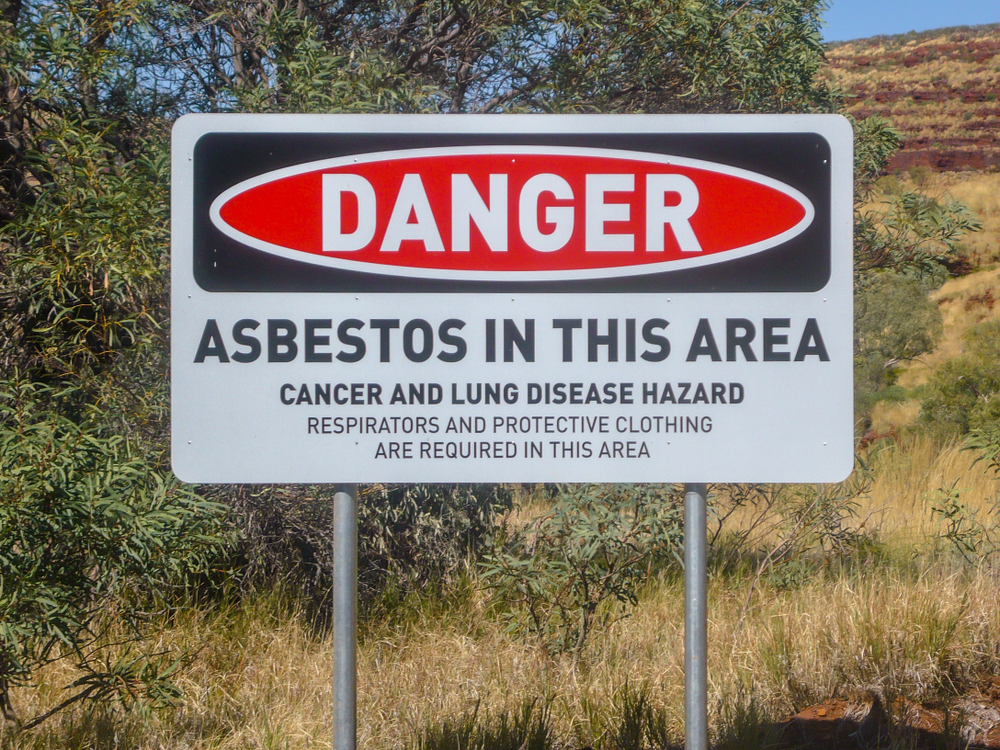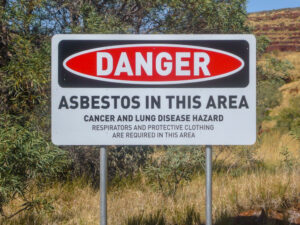What is asbestos exposure, and what does it do to our bodies?
Although asbestos has been banned in South Africa for over 14 years, our country is only just beginning to understand how this deadly substance is affecting the lives of our people. The effects of asbestos exposure impact hundreds of South Africans and their families each year. This is because the substance can cause very serious and even fatal illnesses.
Sources of asbestos exposure are still present in our environment and homes, schools, and workplaces, yet our country pays very little attention to these detrimental consequences.
If you are interested in learning more about asbestos exposure and what you can do if you have been exposed to asbestos, you’ve come to the right place. Our goal is to give you the facts to empower you in your knowledge. Keep reading to find out more.
Where can asbestos be found?
The history of asbestos is fascinating. It has existed in South Africa since 1895, when the mining of this product started. Our country was one of the leading producers of asbestos, with a national production of over 380 thousand tonnes per year.
The asbestos we produced in our mines was distributed worldwide, including the UK, the U.S., Europe, Australia, Asia, and Latin America.
By the year 1960, more than 75% of our asbestos was exported. The remaining product was used to build our infrastructure, including schools, libraries, hospitals, homes, and even transport. In fact, using asbestos for construction was key to the development of most of the Eastern Cape and Northern Cape, and it is still present in many homes and establishments in these provinces.
During the active mining period of asbestos, the companies that owned the mines didn’t give much thought to the workers that were being exposed to it, and there were no health standards in place.
Yet, in as early as 1928, the negative effects of asbestos were known internationally, but it was only banned in South Africa in 2008. The very first cases of asbestos-related cancers were diagnosed in 1935.
It’s fair to say that South Africa had lagged dangerously behind the rest of the world when it came to asbestos exposure. Due to the history of asbestos, many of our people now live with asbestos-related cancer and other diseases.
Despite being banned, asbestos is still present in the roofing of over a million houses.
In addition to some buildings still containing asbestos, those living in communities near dormant asbestos mines and mills are still at risk of exposure to this deadly substance.
How asbestos affects the body
Most people who have been exposed to asbestos have breathed in – or inhaled – its fibres. These fibres are airborne asbestos and cannot be coughed or breathed out. The fibres are so fine that they can penetrate deep into the smallest of airways and air sacs in the lungs.
The asbestos fibres can penetrate through the tissue of the lung into the lining of the lung, also known as the pleura. It also goes into the lymph nodes and other parts of the body.
Some people may also have swallowed its fibres as there is evidence of abdominal issues related to asbestos exposure.
Because these fibres are so long, sharp, and minute in size, it’s difficult for our body’s defence mechanism to get rid of them.
The immune system recognises asbestos fibres as a foreign element and will send a type of white blood cells to surround the fibre and break it down to remove it from the body. But the body can’t remove all inhaled fibres. This is what leads to asbestos-related diseases.
What makes diseases caused by asbestos exposure so tricky is that asbestos exposure symptoms generally only happen at least 10 years after exposure.
While there needs to have been regular and heavy exposure to asbestos to develop a disease, there is no safe threshold for asbestos exposure.
While most people who have worked with or been exposed to asbestos won’t get sick, serious diseases can be caused by even one-time exposure to asbestos.
It’s not known why some people are more susceptible than others, although it is possible that genetics play a role.
How asbestos affects the lungs
As mentioned above, when asbestos is inhaled, it works its way into the lung’s pleura. The fibres can also penetrate the edge of the lung. This can happen in one or both lungs.
The pleural lining consists of two layers, the visceral (inner) layer is next to the lung and the parietal (outer) layer lines the chest wall. The pleura produces a fluid – about two tablespoons – that lubricates the space between the two layers, which allows them to slide comfortably over each other when we breathe in and out.
Asbestos fibres accumulate in the lungs and can start to cause inflammation and other changes to the lung tissue. This leads to scarring of the lungs, and the movement of lung tissue becomes restricted.
It’s no wonder, then, that most of the symptoms of diseases caused by asbestos exposure are things like shortness of breath, chest pain, and coughing.
Can asbestos cause cancer?
If you’re wondering if asbestos can cause cancer, the short answer is yes, it definitely can cause cancer.
Two main types of cancer can be caused by exposure to asbestos: pleural mesothelioma and peritoneal mesothelioma.
Pleural mesothelioma
This type of cancer is when the inhaled asbestos fibres get lodged in the lining of the lung. This causes the lung tissue to become irritated and inflamed. As a result, healthy pleural cells turn into cancerous cells. These cancerous cells can spread throughout the body and can cause tumours.
The irritation caused by the asbestos fibres causes an abnormal amount of fluid build-up between the two layers of the pleura on the lungs – this is called pleural effusion. Some fluid between the layers is healthy. Too much fluid puts pressure on the lungs and can cause chest pain.
Pleural mesothelioma also involves the thickening of the pleural tissue. It can stiffen because of the scarring caused by the sharp fibres, and this can make it difficult to breathe.
Pleural mesothelioma is often only detected in later stages because symptoms like fatigue and weight loss take many years to occur.
According to the Cancer Association of South Africa (CANSA), 70% of mesothelioma cases are pleural mesothelioma.
The symptoms of this type of lung cancer can include:
- Shortness of breath.
- Chest pain or pain when breathing.
- A persistent cough.
- Sweating.
- Loss of appetite.
- Weight loss.
- Fatigue and lethargy.
Peritoneal mesothelioma
This type of cancer is also known as abdominal mesothelioma because it develops in the tissue that lines the abdomen, called the peritoneum.
The peritoneum is meant to protect all the organs and tissue within our abdomen – the space between the chest and the pelvis – and helps to keep them in place. It also creates a type of fluid that lubricates the organs so that they are smooth against each other.
Peritoneal mesothelioma is a tumour that starts in the peritoneal lining. And, like pleural mesothelioma, peritoneal mesothelioma can be caused by exposure to asbestos.
The symptoms of peritoneal mesothelioma include:
- Abdominal pain.
- Swelling of the abdomen.
- Constipation or diarrhoea.
- Feeling or being sick.
- Indigestion.
- Loss of appetite.
- Weight loss.
- Night sweats.
- Fatigue.
For more information on symptom management or support with your disease contact the Glynnis Gale Foundation or call Kimberley 053 285 0670.
Can mesothelioma be cured?
In South Africa alone, there are about 200 cases of mesothelioma per year. What is incredibly sad about this disease is that there is no cure. In a 2002 study, it was found that over 2700 South Africans have died from this type of cancer – a number which definitely would have risen since the study.
There are various treatment options for mesothelioma, and some combinations of these treatments have proven successful in extending the lives of those living with this cancer. Treatments can also improve the quality of life for people experiencing these cancers’ negative symptoms.
Treatment options include:
- Chemotherapy is injected into a vein through a drip, infusion pump, or mouth.
- Radiotherapy.
- Surgery.
- Immunotherapy.
Doctors will choose the treatment depending on how advanced the disease is – or what stage the disease is in – as well as the type of mesothelioma the patient has. The general health and fitness of the patient will also affect the type of treatment they receive.
Unfortunately, the outlook for people with mesothelioma tends to be poor. This is because the disease is often not detected until the very late stages, making it more likely that mesothelioma patients will die from the disease.
What you need to know about Enviro Investigations
Although asbestos is now banned in our country, its legacy lives on in all those affected by mesothelioma and other asbestos-related diseases.
Did you know that if you have mesothelioma, you or your loved ones are entitled to receive compensation?
That’s where Enviro Investigations come in. We help those living with diseases caused by asbestos exposure build a case so they can claim the money they are eligible for.
We gather all the information and evidence you would need for your asbestos disease claim, guide you through every aspect of the claims process, and give you and your family peace of mind.
Our compassionate and friendly team have one aim: to give you a voice and get you the results you rightfully deserve.
It’s never too late to win the fight against the injustices of the past. If you or someone you know is living with mesothelioma cancer or other diseases caused by asbestos exposure, contact us today via our website, or call Kimberley 053 285 0671 and one of our expert claim specialists will get in touch.




